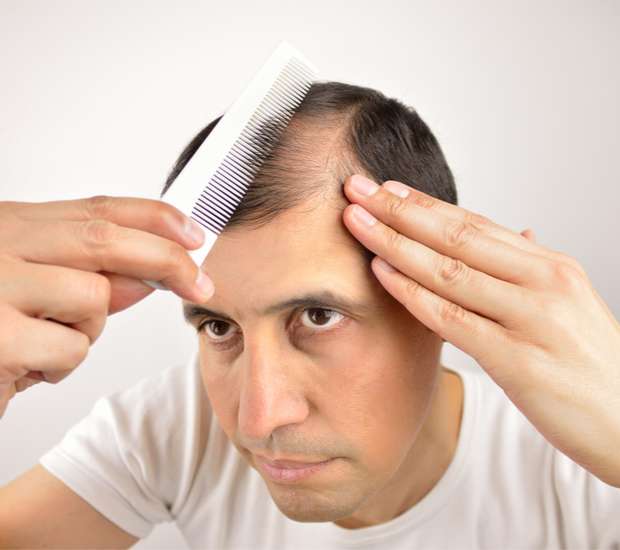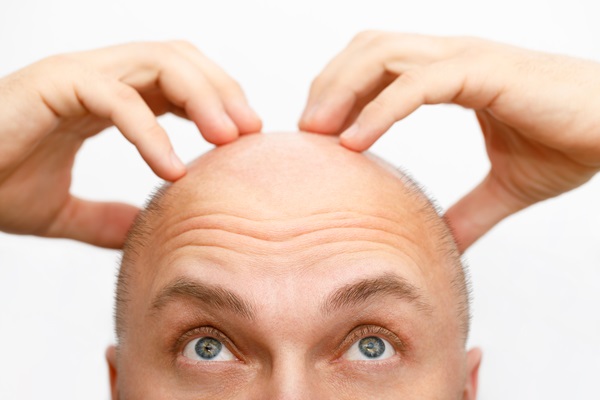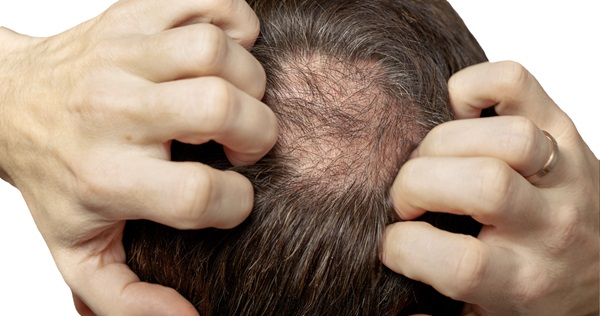Hair TransplantSchaumburg, IL
Regardless of gender or age, hair loss affects many people around the world. Our team provides various treatments and procedures to address this problem. Hair transplants are one such procedure that can help restore your hair and boost your appearance and self-confidence.
If you are interested in receiving a hair transplant, speak with our surgeon to determine whether this procedure is the right option for you. Hair transplants are available at Dillon Hair Restoration in Schaumburg and the surrounding area. Call us today at 800-518-9307 to learn more about our services or schedule an appointment.
Understanding Hair Transplants
A hair transplant is a surgical procedure that moves existing hair to another area on a patient’s head that has sparse or no hair at all. This procedure involves transferring hair from fuller areas of the scalp or other parts of the body and grafting it to the balding scalp area. Typically hair from the back or side of the head is moved to the front or top of a patient’s head.
Although patients in the United States have received hair transplants since the early 1950s, more advanced techniques, and technology are now available to help people reach their hair goals. There are two types of hair transplant methods, follicular unit transplantation (FUT), and follicular unit extraction (FUE). The best option for patients will depend on their individual needs and our surgeon’s recommendations.
Hair Transplant Candidacy
Hair transplants are not just for men. According to the American Hair Loss Association, two-thirds of men experience hair loss by 35, while 40% of hair loss sufferers are women. Although hair transplants can benefit many people, it is not the best option for everyone.
Good candidates for a hair transplant include men with male pattern baldness, women with thinning hair, and people who have lost hair due to a scalp injury or burn. Hair transplants are not a good option for women with widespread patterns of hair loss throughout the scalp. Additionally, people who form keloid scars, have hair loss due to medication like chemotherapy or lack sufficient “donor” hair sites are not ideal candidates for this treatment.
What To Expect During a Hair Transplant
Before our surgeon begins the hair transplant, they will thoroughly clean the patient’s scalp. Most patients will remain awake during the procedure and receive local anesthetics on the scalp to stay comfortable and pain-free. The patient’s healthy hairs are then removed by either cutting a strip of skin or removing individual hairs.
Before transplanting the hairs, our surgeon will prep the removed hairs and get the patient’s scalp ready for grafting. Then our team will place the healthy hairs into the sparse or balding areas. Once the hairs are transplanted, the patient is bandaged up and given instructions for at-home care.
Hair Transplant Results
The transplanted hair will fall out between two and eight weeks after the surgery. Hair may even look thinner around the third month after the hair transplant. Both of these results are normal. Most patients will see the actual procedure results in six to 12 months after the surgery. A 2017 study found that anywhere from 10-80% of the transplanted hair will fully grow back in three to four months.
Hair transplants are usually more effective than over-the-counter hair restoration products. However, patients should be aware that transplanted hair will thin over time like regular hair. For longer results, some people may require follow-up hair transplants.
Hair Transplant Aftercare
Patients will be able to return home the same day of the surgery. It is normal to experience pain and soreness at the treatment site and the area from which our surgeon took healthy hair. Patients may use over-the-counter pain medication to minimize discomfort. We may also prescribe anti-inflammatories to relieve swelling, antibiotics to prevent infection, and medication to stimulate hair growth.
After the surgery, patients should wait a few days before washing their hair and only use mild shampoos. Most people can return to their normal activities around three days after the procedure. We recommend that patients not brush over the grafts for three weeks, exercise for a week, and wait to wear hats or pullover shirts until our surgeon says it is okay. Patients usually have their stitches removed 10 days after the surgery.
What to Expect During Hair Transplant Surgery
The procedure starts with an initial consultation with the doctor to discuss treatment expectations from the surgery.
The surgeon will clean the scalp and inject a numbing medication into the back of the head. The doctor may opt for any of the transplant techniques, such as follicular unit strip surgery (FUSS) or follicular unit extraction (FUE).
FUSS
With FUSS, the doctor will take a six to ten inches strip of skin from the back of the head then seal the scalp off. The area will be covered by the surrounding hair. Afterward, the surgeon and the medical team will separate the strip of extracted scalp into 500 to 2,000 small grafts, each with one or a few hair strands. The amount or type of graft used is based on the type of hair, color, quality and the size of the area to be treated.
FUE
For the FUE procedure, the medical team will shave the back of the scalp. Afterward, the surgeon will extract the hair follicles individually. That part will heal will tiny dots, but will be covered by the surrounding hair.
At this stage, the two procedures are similar. After preparing the grafts, the surgeon will clean and numb the area to be treated, make incisions or holes using a needle or scalpel, and carefully insert each graft into the holes. Other members of the team will help plant the grafts.
Depending on the extent of the transplant, the entire process may take between four to eight hours. The patient might require another procedure eventually if hair loss continues or if they want fuller hair.
Recovery
After the surgery, the scalp will feel sore and tender. The surgeon will recommend pain meds for the pain and applying bandages over the scalp for a day or two. The patient may also need to take antibiotics or an anti-inflammatory drug for some days. Most patients can resume their regular routine two to five days after the surgery.
After two or three weeks, the hair transplants will shed off, and new growth will start within a few weeks. Most patients notice significant hair growth six to nine months after surgery. Some physicians recommend hair-growing medication minoxidil (Rogaine) to boost hair growth after hair transplant.
Risks
The hair transplant procedure has its risks, such as bleeding and infection. Scarring and strange-looking new hair growth may also occur. When the new hair starts to grow, some patients may experience inflammation or hair follicle infection, called folliculitis. The surgeon will recommend antibiotics and compresses to treat the issue. Shock loss might also occur, where some original hair might be lost where the new strands are forming. This is mostly temporary.
Final Note
It is better to discuss expectations of the hair transplant procedure with the doctor. Patients usually get a confidence boost from their better-looking, fuller hair as a result of the treatment.
Call Us Today
If you are experiencing hair loss, a hair transplant may be able to help. Hair transplants are available at Dillon Hair Restoration. Call us today at 800-518-9307 to learn more about our services or schedule an appointment.
Frequently Asked Questions
Are there any hair transplant side effects?
Hair transplants are generally safe procedures. However, like any surgical procedure, side effects and complications can occur. Some side effects include scarring, temporary pain, swelling, infection, and bleeding.
What happens before the hair transplant surgery?
Before the hair transplant surgery, patients will have a consultation to determine if they are a good candidate for the procedure. Some people may require a blood test or scalp biopsy to determine the cause of their hair loss. If the patient is a good hair transplant candidate, our surgeon will discuss what results they can expect from the procedure.
Why might I lose more hair before I grow new hair after a hair transplant?
Shock loss is the temporary thinning of hair due to the micro-trauma caused by an incision between the existing hairs. These hairs will grow back within a few months, but results show that approximately 10-20% of the hairs will go through a new cycle and fall out temporarily before growing back in. This process can last for a few weeks following the procedure.
What is the duration of a hair transplant?
A hair transplant procedure typically takes between four and eight hours. The length of the treatment will depend on the number of grafts being transplants. Patients with a large amount of transplanted hair may need to return for a few hours the next day to finish the transplant.
How many hair transplant procedures will I need?
Generally, most patients will only need one hair transplant to see an improvement in hair density and appearance. However, in some instances, patients may require more than one procedure or additional touch-ups later on. People may have multiple hair transplants because of further hair loss, spread the cost out, or cover scarring from previous hair transplants.
Contact Us
Dillon Hair Restoration is located at 890 E Higgins Rd Ste 158 Schaumburg, IL 60173.





